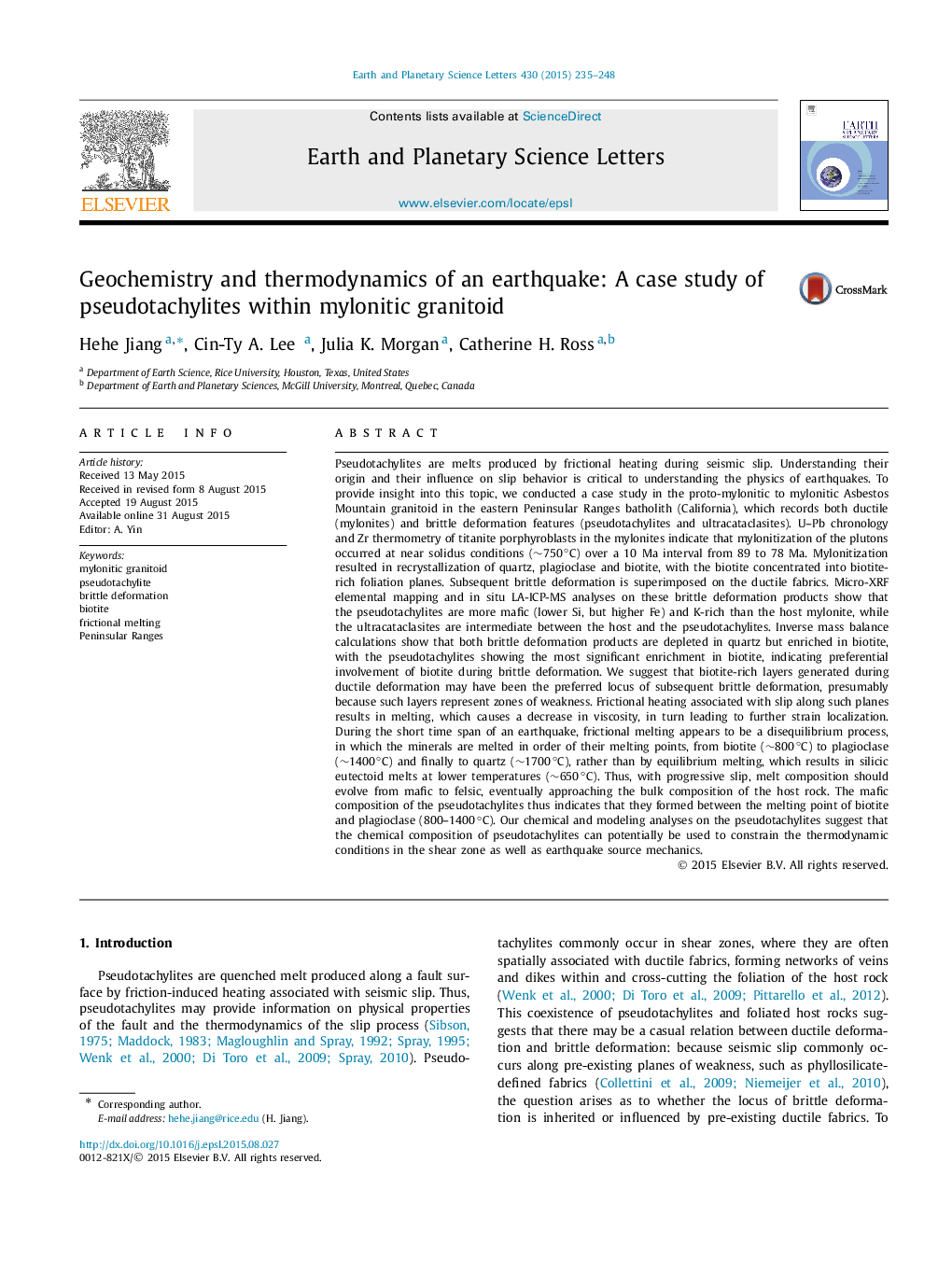| کد مقاله | کد نشریه | سال انتشار | مقاله انگلیسی | نسخه تمام متن |
|---|---|---|---|---|
| 6427934 | 1634726 | 2015 | 14 صفحه PDF | دانلود رایگان |

- Pseudotachylite chemistry suggests involvement of biotite in brittle deformation.
- Brittle deformation inherits from pre-existing ductile fabrics.
- Presence of biotite constrains the thermodynamics of brittle deformation.
- Pseudotachylite composition can be used to constrain earthquake mechanics.
Pseudotachylites are melts produced by frictional heating during seismic slip. Understanding their origin and their influence on slip behavior is critical to understanding the physics of earthquakes. To provide insight into this topic, we conducted a case study in the proto-mylonitic to mylonitic Asbestos Mountain granitoid in the eastern Peninsular Ranges batholith (California), which records both ductile (mylonites) and brittle deformation features (pseudotachylites and ultracataclasites). U-Pb chronology and Zr thermometry of titanite porphyroblasts in the mylonites indicate that mylonitization of the plutons occurred at near solidus conditions (â¼750°C) over a 10 Ma interval from 89 to 78 Ma. Mylonitization resulted in recrystallization of quartz, plagioclase and biotite, with the biotite concentrated into biotite-rich foliation planes. Subsequent brittle deformation is superimposed on the ductile fabrics. Micro-XRF elemental mapping and in situ LA-ICP-MS analyses on these brittle deformation products show that the pseudotachylites are more mafic (lower Si, but higher Fe) and K-rich than the host mylonite, while the ultracataclasites are intermediate between the host and the pseudotachylites. Inverse mass balance calculations show that both brittle deformation products are depleted in quartz but enriched in biotite, with the pseudotachylites showing the most significant enrichment in biotite, indicating preferential involvement of biotite during brittle deformation. We suggest that biotite-rich layers generated during ductile deformation may have been the preferred locus of subsequent brittle deformation, presumably because such layers represent zones of weakness. Frictional heating associated with slip along such planes results in melting, which causes a decrease in viscosity, in turn leading to further strain localization. During the short time span of an earthquake, frictional melting appears to be a disequilibrium process, in which the minerals are melted in order of their melting points, from biotite (â¼800°C) to plagioclase (â¼1400°C) and finally to quartz (â¼1700°C), rather than by equilibrium melting, which results in silicic eutectoid melts at lower temperatures (â¼650°C). Thus, with progressive slip, melt composition should evolve from mafic to felsic, eventually approaching the bulk composition of the host rock. The mafic composition of the pseudotachylites thus indicates that they formed between the melting point of biotite and plagioclase (800-1400°C). Our chemical and modeling analyses on the pseudotachylites suggest that the chemical composition of pseudotachylites can potentially be used to constrain the thermodynamic conditions in the shear zone as well as earthquake source mechanics.
Journal: Earth and Planetary Science Letters - Volume 430, 15 November 2015, Pages 235-248